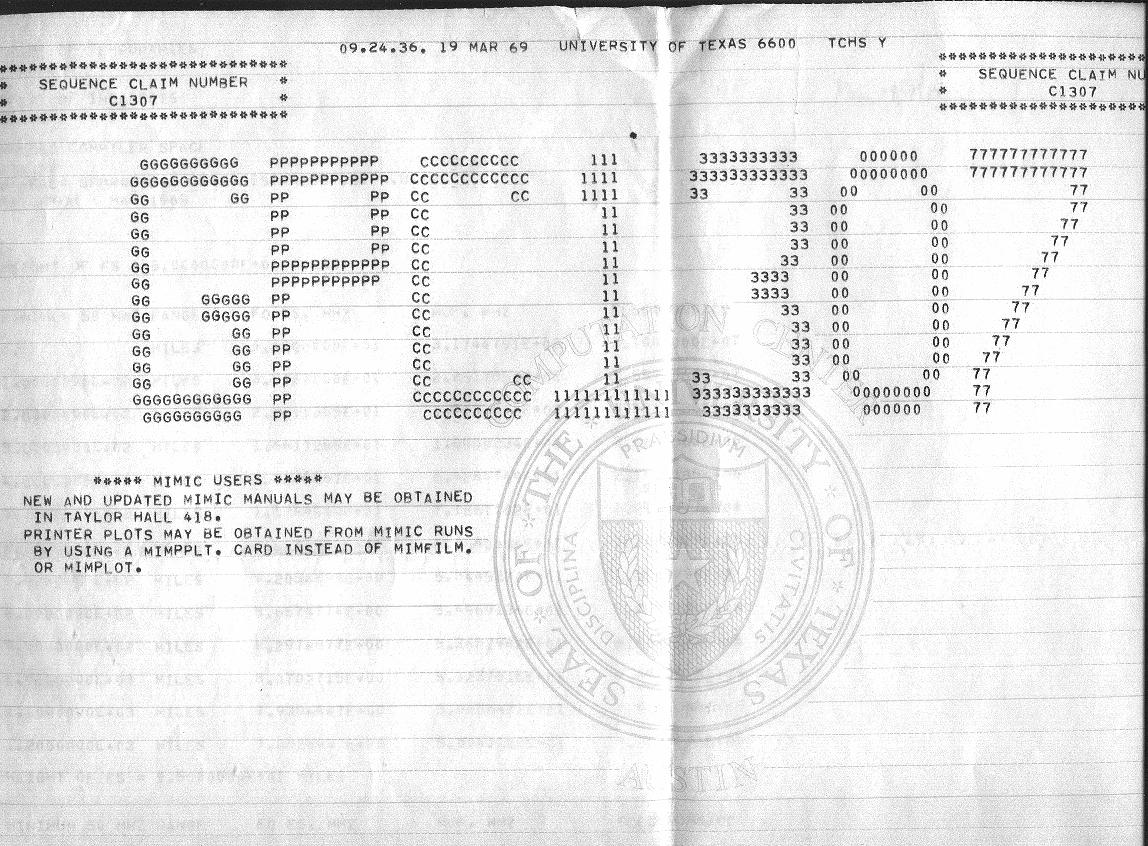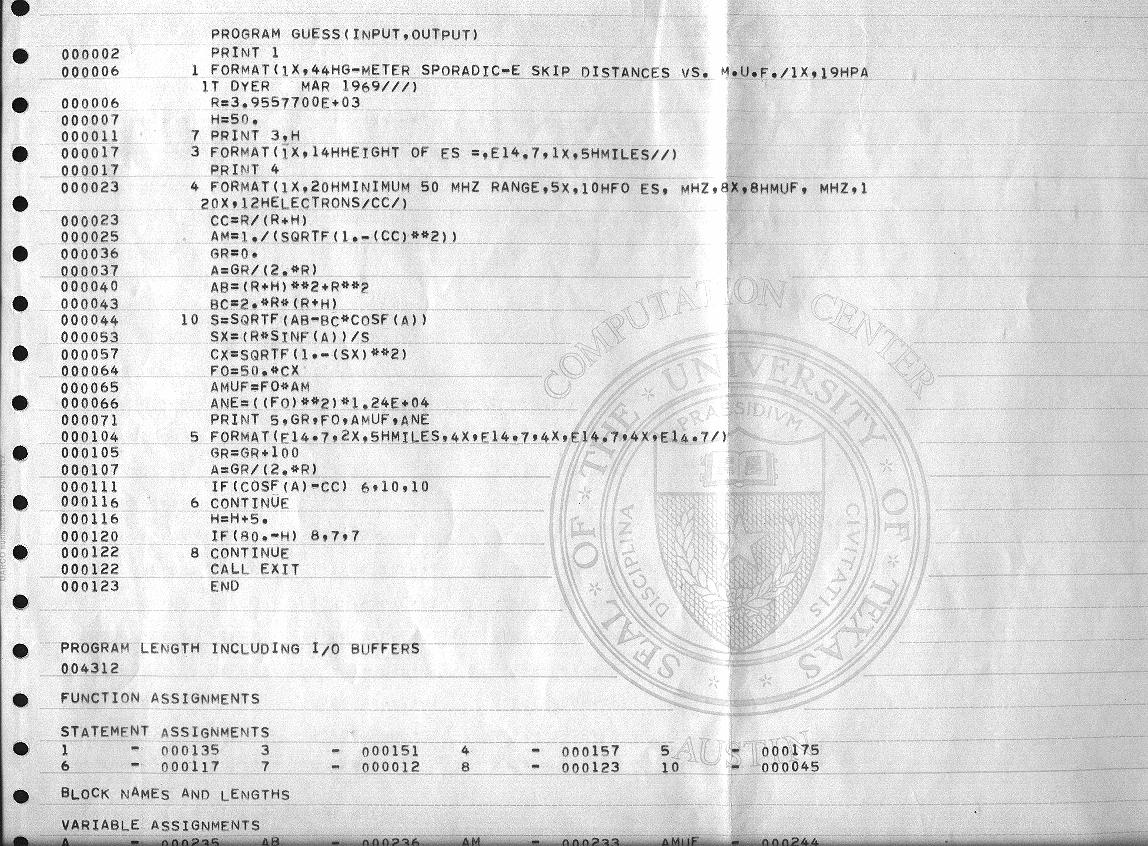UT Austin 1969 CDC6600 Mainframe Printout
These are some pages of a FORTRAN program printout run on the UT Austin CDC6600 mainframe in Mar 1969.
I had these run on a fellow Physics Major's account, with someone else doing the actual key punching of the cards.
They were batch processed with the next-day results picked up in the basement of Pearce Hall (now demolished).
That was several hundred feet south from the actual comp center. Later on that place was wired so that the card
readers and a line printer there could do input-output with the CDC6600 and eliminate the daily cart of reams of
printouts having to be made to there. Such a slow turnaround time made any debugging a drawn-out process.
I had learned rudimentary FORTRAN as part of an extracurricular course - Monday nights for 8 weeks in early 1964
at nearby St. Mary's Univ. here in San Antonio. Their system had been an IBM1620 (20k core memory) and typewriter
output. That system had required that the program be read in, compiled with another set of punched cards (about ten
times the size) produced (object deck - machine language) and reread into it before it could be run.
In the fall of 1966 at UT Austin I had some programs run on the Engineering School's IBM1620 (thru a Calculus
classmate). Their system had a wondrous hard drive ($20k item then) to compile the FORTRAN on and thus eliminate
the object deck of cards. However, it still had the very slow typewriter for output.
By the spring of 1967 a fellow Physics Major (Robert Dale Erickson) was taking a computer science class so had some
mainframe access time. Thru that I was able to get a few programs run during that semester.


The original keypuncher had misread my "6-meter" as "G-meter", and I never bothered to have that card changed.
The lack of an arctan function in that FORTRAN required some extra program steps to get around.
This program calculated (using the Secant Law) the foEs, MUF, and electron density based on the minimum skip
distances observed (100-mile increments) on 50-MHz for various layer heights (50 to 80 miles, 5-mile increments).
It's all just High School-level trig (Law of Sines, Law of Cosines) and geometry - no "advanced math" used.
The results for the (lowest) 50-mile high Es
MINIMUM 50 MHZ RANGE FO ES, MHZ MUF, MHZ ELECTRONS/CC
0. MILES 5.0000000E+01 3.1744791E+02 3.1000000E+07
1.0000000E+02 MILES 3.5467000E+01 2.2517850E+02 1.5598060E+07
2.0000000E+02 MILES 2.2811365E+01 1.4482840E+02 6.4524436E+06
3.0000000E+02 MILES 1.6617268E+01 1.0550234E+02 3.4240565E+06
4.0000000E+02 MILES 1.3275367E+01 8.4284749E+01 2.1853185E+06
5.0000000E+02 MILES 1.1288010E+01 7.1667102E+01 1.5799977E+06
6.0000000E+02 MILES 1.0030088E+01 6.3680606E+01 1.2474729E+06
7.0000000E+02 MILES 9.2054898E+01 5.8445270E+01 1.0507889E+06
8.0000000E+02 MILES 8.6579774E+01 5.4969136E+01 9.2951110E+05
9.0000000E+02 MILES 8.2978877E+00 5.2682942E+01 8.5380127E+05
1.0000000E+03 MILES 8.0702715E+00 5.1237816E+01 8.0760310E+05
1.1000000E+03 MILES 7.9396447E+00 5.0408472E+01 7.8167068E+05
1.2000000E+03 MILES 7.8820987E+00 5.0043115E+01 7.7038076E+05
Other programs devised during that Spring 1969 semester, but never run, included one that dealt with tilted Es.
It handled various Es heights and tilts so extreme that the return signal would miss the earth at a point BEHIND
the originator!
Page Created; Aug 31, 2013

